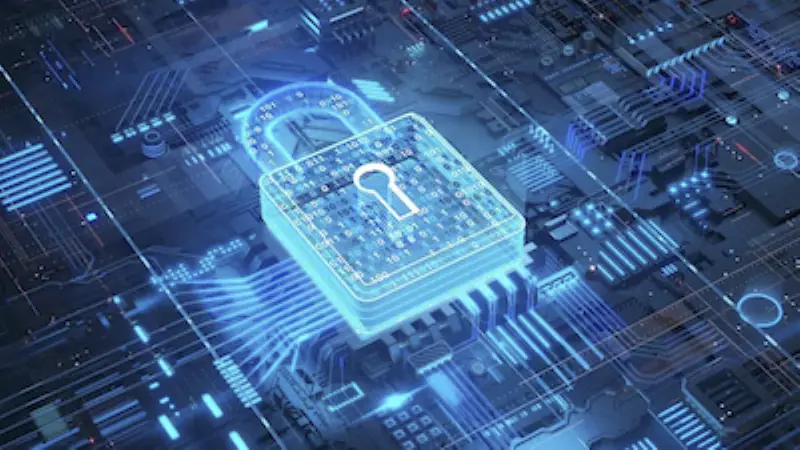AI-Powered Cyber Attacks: The Next Big Challenge
As artificial intelligence (AI) continues to revolutionize industries, it is also being weaponized by cybercriminals. AI-powered cyber-attacks are rapidly evolving, making traditional security measures obsolete. In 2025, organizations must prepare for a new wave of sophisticated threats that leverage machine learning, automation, and deepfake technology to breach defences and exploit vulnerabilities. With threat actors now blending AI with traditional tactics, cyber warfare is entering an unpredictable and dangerous new era.
Understanding AI-Powered Cyber Attacks
AI-powered cyber-attacks involve the use of artificial intelligence and machine learning to automate, scale, and enhance cyber threats. Unlike traditional cyber threats, AI-driven attacks can adapt in real time, bypass security measures, and launch highly targeted assaults with minimal human intervention. These attacks not only operate at unprecedented speed and precision but are also capable of learning from failed attempts and adjusting tactics instantly—something that legacy security systems struggle to counter.
Key Characteristics of AI-Driven Cyber Attacks
- Autonomous Threat Execution: AI-powered malware can self-propagate, adapt, and evade detection. These malicious agents often operate without direct oversight, making them faster and harder to neutralize.
- Advanced Phishing Attacks: AI can generate realistic phishing emails, texts, and voice messages, increasing the chances of deception. By mimicking writing style, tone, and even organizational jargon, these messages often pass undetected through filters.
- Deepfake and Social Engineering: Cybercriminals use AI-generated deepfakes to impersonate executives, manipulate financial transactions, or spread misinformation. These tools can also simulate live video calls, increasing the believability of fraudulent requests.
- AI-Augmented Ransomware: AI-enhanced ransomware can analyse vulnerabilities faster, adjust encryption tactics, and target critical infrastructure. These attacks can dynamically identify the most damaging files to encrypt first, maximizing leverage for ransom demands.
- Automated Vulnerability Exploitation: AI systems scan networks at scale, identifying and exploiting weaknesses before security teams can react. Some even integrate with open-source intelligence (OSINT) to craft more targeted exploits.
- Polymorphic Malware Capabilities: AI enables malware to mutate its code autonomously to avoid detection by traditional signature-based antivirus tools, making persistent threats harder to identify.
Top AI-Powered Cyber Threats in 2025
- AI-Generated Phishing Scams: Traditional phishing emails are easy to detect due to poor grammar and generic messages. AI-driven phishing attacks, however, can craft highly personalized emails based on stolen data, increasing their effectiveness. Some phishing campaigns even adjust in real-time based on user responses, creating interactive and believable scams.
- Self-Learning Malware: AI-powered malware uses ML algorithms to analyse an organization’s defence mechanisms and modify itself to evade detection. This makes conventional antivirus solutions less effective. These systems can also coordinate attacks with other compromised devices, behaving like a swarm.
- Deepfake Fraud and Identity Theft: Deepfake technology has advanced to the point where cybercriminals can mimic a CEO’s voice or create realistic video messages to manipulate employees or stakeholders into making financial transactions. Even security-conscious employees may fall victim to a convincing video call impersonating leadership.
- AI-Enabled Credential Stuffing: Attackers use AI to automate credential stuffing attacks, testing millions of username-password combinations stolen from data breaches to gain unauthorized access to accounts. With behavioural pattern analysis, these tools can also mimic legitimate user behaviour to avoid detection.
- AI-Powered DDoS Attacks: Cybercriminals leverage AI to orchestrate Distributed Denial-of-Service (DDoS) attacks, dynamically adjusting attack patterns in real time to bypass mitigation strategies. AI can identify the weakest points in infrastructure and focus its attack to maximize disruption.
- Insider Threat Detection Evasion: AI can help attackers mimic normal user behaviour to avoid triggering insider threat detection systems, allowing them to exfiltrate data slowly over time or conduct fraud without raising red flags.
Recent Incidents Highlighting the Threat
Several recent incidents underscore the growing menace of AI-powered cyber-attacks:
- Financial Sector Under Siege: A survey revealed that 80% of bank cybersecurity executives feel ill-equipped to combat AI-enhanced cyber threats. Despite substantial investments in cybersecurity, banks are struggling to keep pace with the rapid evolution of AI-driven attacks, which include sophisticated scams and unauthorized data access.
- Healthcare Industry Targeted: Health insurers, hospitals, and clinics have experienced a surge in cyber-attacks aimed at critical infrastructure and sensitive data. Notably, the Medibank breach in 2024 exposed vulnerabilities within the sector, emphasizing the urgent need for robust cybersecurity measures to protect patient information.
- Supply Chain Vulnerabilities: In 2024, a supply chain attack targeted the Python Package Index (PyPI), a repository widely used by developers. Attackers uploaded malicious packages containing malware designed to steal sensitive information, highlighting the susceptibility of open-source ecosystems to AI-driven threats.
- Email Platform Exploits: Recently, cybersecurity experts raised alarms over new email scams targeting Gmail, Outlook, and Apple users, where AI is used to fine-tune messages to bypass spam filters and trick recipients.
Defensive Measures Against AI-Powered Threats
To safeguard against AI-driven cyber-attacks, individuals and organizations should consider the following measures:
- Enhanced Vigilance: Be cautious of unsolicited communications, even those that appear personalized. Verify the authenticity of emails, especially those requesting sensitive information or financial transactions.
- Multi-Factor Authentication (MFA): Implement MFA across all accounts to add an extra layer of security, making it more challenging for attackers to gain unauthorized access.
- Regular Software Updates: Keep all software and systems up to date to patch vulnerabilities that cybercriminals could exploit.
- AI-Driven Security Solutions: Adopt AI-based cybersecurity tools capable of detecting and responding to threats in real-time. These systems can learn from new threats and adapt to evolving attack patterns.
- Zero Trust Architecture: Adopt a zero-trust model where no user or device is automatically trusted. This limits lateral movement within networks in case of a breach.
- Continuous Education: Stay informed about emerging cyber threats and educate employees about recognizing and responding to potential attacks. Regular training and simulated phishing exercises can significantly reduce risks.
The Dual-Edged Sword of AI in Cybersecurity
While AI equips cybercriminals with advanced tools, it also serves as a critical asset for cybersecurity professionals. Leading cybersecurity companies are integrating AI into their defence strategies to analyse vast datasets, detect anomalies, and predict potential threats. This proactive approach enables organizations to identify and mitigate risks before they materialize into full-blown attacks. AI is also being used to create deception environments (like honeypots) that trap and study attackers, providing valuable threat intelligence.
Why Choose DigiFortex for LLM Penetration Testing?
At DigiFortex, we understand the unique challenges of securing LLMs and other AI systems. Here’s why businesses trust us:
- Certified Experts: CIPPE, CCSA, CCNA, HPOV, DCPLA, CEH, CISSP, CISM, ISO27001 LA.
- ISO 27001:2022 certified and CERT-In empanelled: DigiFortex is ISO 27001:2022 certified and CERT-In empanelled for providing Information security services. We bring unparalleled expertise to every project.
- Specialized Expertise: Our team combines deep knowledge of AI systems with advanced cybersecurity skills.
- Tailored Approach: We customize our testing methodologies to your specific LLM deployment.
- Comprehensive Reporting: Our reports include clear insights and actionable recommendations.
- Proven Track Record: We’ve successfully secured AI systems across industries, from healthcare to finance.
Conclusion
AI-powered cyber-attacks represent one of the biggest challenges for cybersecurity in 2025. As adversaries continue to exploit AI for malicious purposes, organizations must adopt cutting-edge AI-driven security solutions, implement robust defensive strategies, and foster a cybersecurity-first culture.
At digifortex we specialize in AI-driven cybersecurity solutions that safeguard businesses against emerging threats. Our expertise in penetration testing, threat intelligence, and compliance frameworks ensures that your organization stays resilient in the face of AI-powered cyber-attacks.
To know more: Click Here




